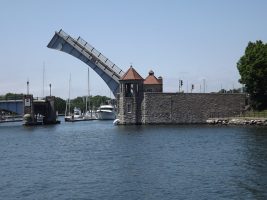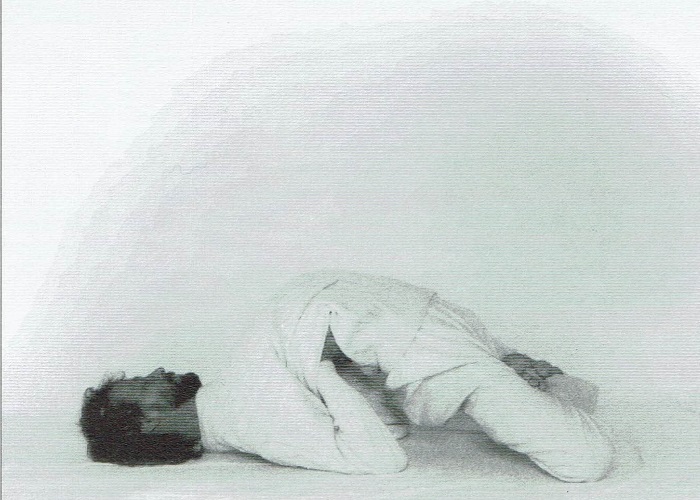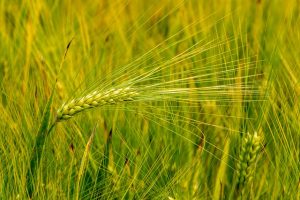
Uttana padma mayurasana, uttāna padma mayūrāsana – bridge in lotus pose
The Yoga Online Exhibition that is on this website has a history and points to the future. It encourages the exploration of how beauty is created. With what criteria does the beauty of the human body manifest itself in the representation of yogāsana? As a viewer, you are welcome to participate in the project with your own yoga photos and experiences on the aspect of beauty and aesthetics in yoga. For easy uploading an image file you can use the contact form. And do not forget to leave an entry in the guestbook!
Uttāna padma mayūrāsana

Bridge in Lotus Pose with “most intensive spiral dynamics in the back”¹
Heinz Grill on setu bandhāsana (bridge with straight legs) and uttāna padma mayūrāsana (bridge in the lotus):
setu bandhāsana
The bridge pose, setu bandhāsana, is one of the basic positions of yoga, which requires a strong dynamic, as well as a big flexibility in the back and legs. Different phases are necessary to achieve the perfect final position and can accompany the beginning practice as a training option. Both the body and the consciousness are systematically and sensibly required in these preparatory steps, that precede the final position.
The requirement for awareness in setu bandhāsana lies particularly in the fact, that the practitioner does not force himself into the end position too early, but develops the dynamic preparatory phases sufficiently and with this develops the aesthetic breadth of the movement. When he streches out the legs into the bridge dynamics, he does not fall down to the ground with the foot, but guides the movement with careful observation until the entire arch can be reached out like a pleasant, old drawbridge. Rather, the practitioner is invited to an intense dynamic movement, in which he simultaneously slides into the width, while holding the trunk and contracting the pelvic floor, so that in the last phase the feet finally reach the floor without jumping, gently touching. The exercise can be assigned to the second center. …
uttāna padma mayūrāsana
The bridge in lotus pose, (uttāna padma mayūrāsana), was given here in addition to show, what possibilities can be practiced in building up movement and in the coordination of the individual spine sections. It is one of the most difficult backward bendings, because it demands not only complete mobility, but also the most intensive, cleverly applied spiral dynamics in the back. If you are very advanced, you can try this position, beginning with the shoulder stand. Balance and resilience are requiring a very delicate movement.¹
Text sources and note:
Spiral dynamics = The term spiral dynamics expresses the fact that the human body is constructed according to spiral principles. “The spine turns alternately to the left and to the right, when we are walking and running and by this, it functions as a double spiral.” ² Moving with cleverly applied spiral dynamics means moving the spine exactly in the natural interplay of the vertebrae and not moving the body from the outside impose.
Sanskrit terms:
setu = the bridge
bandh = to bind
āsana = the position
uttāna = intense stretching
padma = the lotus
mayūra = the plow³
(1) Heinz Grill, Die Seelendimension des Yoga, Verlag für Schöne Künste 2019, p. 90 (not translated in English)
(2) Spiraldynamik® Erklärvideo (German language)
(3) Monier-Williams Sanskrit-English Dictionary, 1899
Image fonts (19-05-29): drawbridge-picture of armandoone on pixabay, uttāna padma mayūrāsana-Heinz Grill, Das Hohelied der Asanas, Lammers-Koll-Verlag 2004, p. 44




